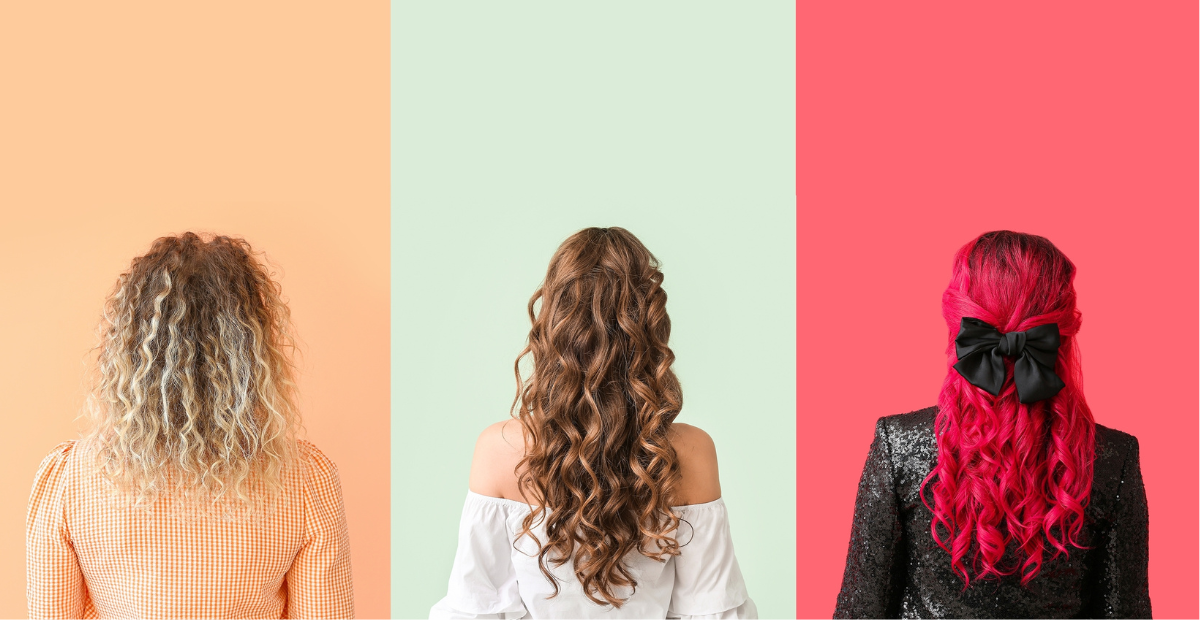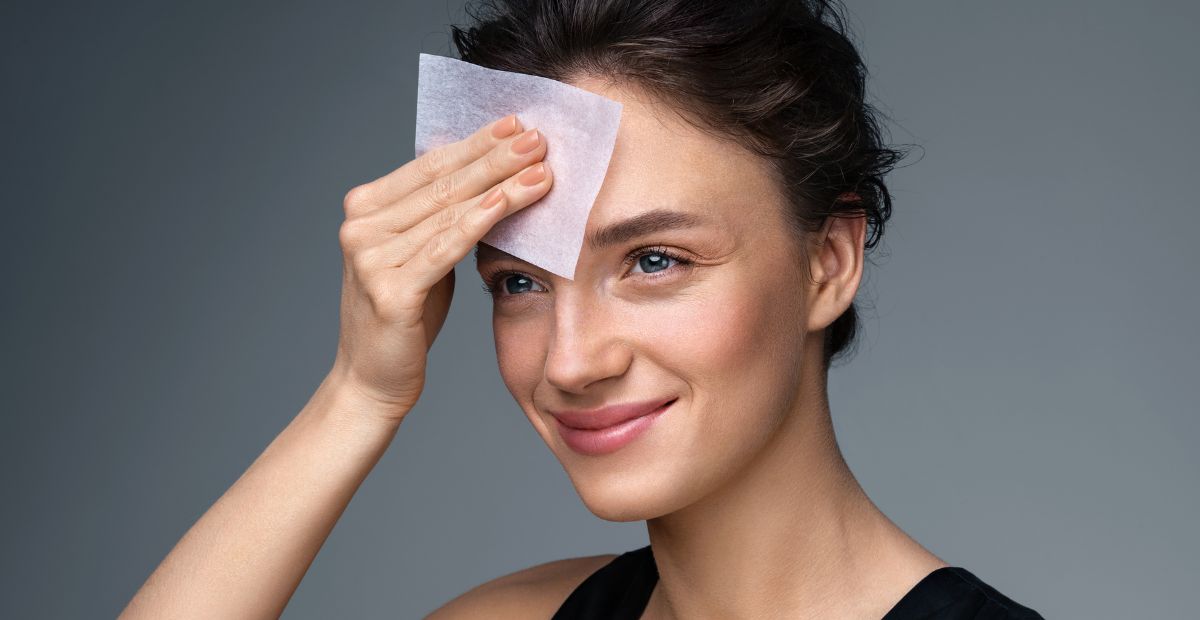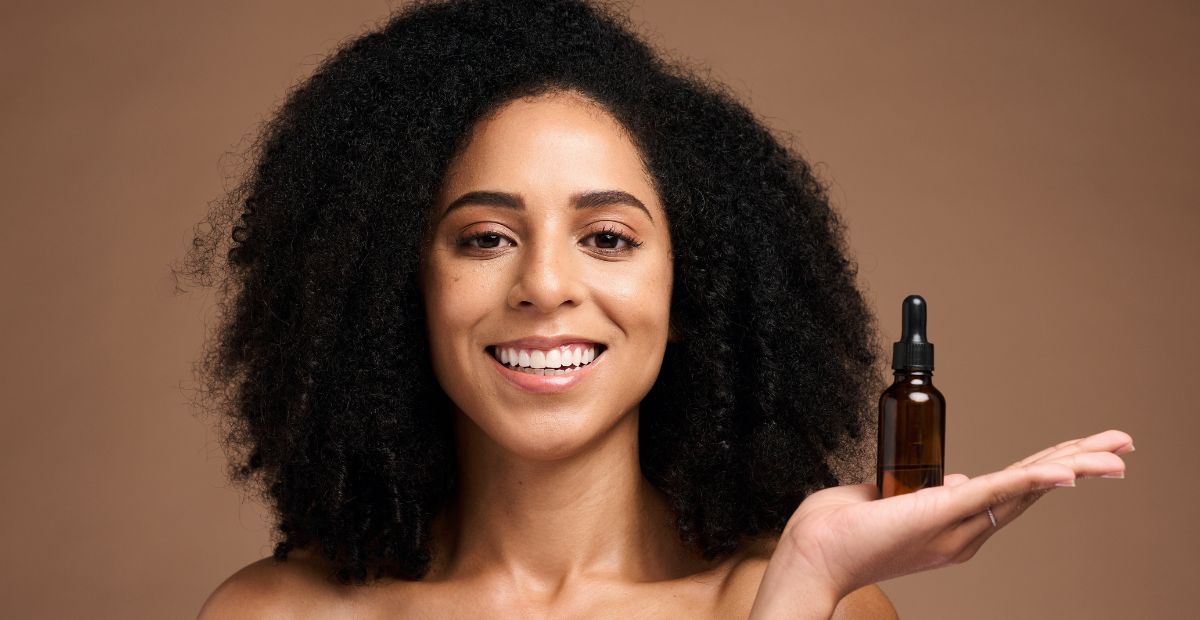Got Back Acne? You Might Want to Toss Your Body Wash
Onskin Content Team
Your guides through the skincare chaos

Something as annoying as facial acne? It must be back acne (or bacne). Who are we kidding—it can be even more annoying than facial zits! Why? First, you can’t properly see or reach back spots unless you’re a yoga pro or have someone “kind” enough to point them out to you. Constant friction from clothes adds to the irritation too.
If bacne is bugging you, there’s no need to get desperate—just like acne, it’s manageable. This post will guide you through the best tips from skin experts to get your back… back to its smooth, moisturized self!
(Gym goers and fans of perfumed body washes, you might want to read it through).
Back Acne: Which Factors Are at Play?
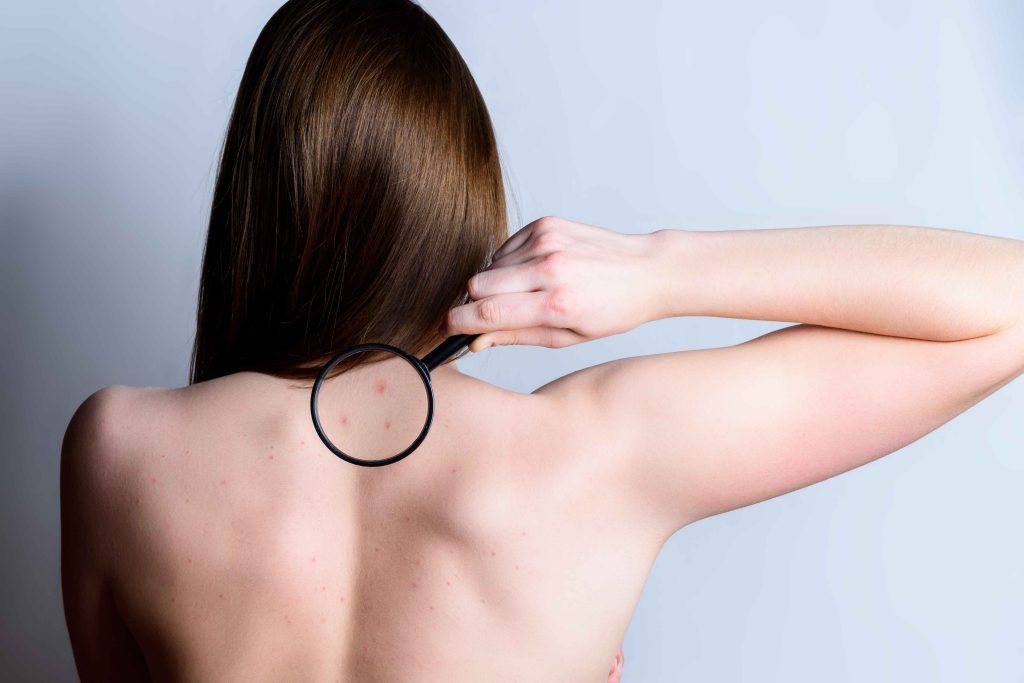
First off, back acne is a common issue, and there’s no need to let it hold you back from rocking your favorite outfits, hitting the pool, or enjoying any activities that might show off your back. To tackle bacne head-on, it helps to understand what’s causing it. Let’s dive into the most common culprits behind those breakouts:
- Genetic factors. 48-52% of people with facial acne experience back acne, too, as statistics show. Still, it can also occur if you’ve never had a single pimple on your face.
- Thyroid issues and hormonal fluctuations.
- Steroid acne, or the so-called bodybuilder’s acne (yes, it’s a thing!), is caused by steroid use. There’s a high chance that stopping or reducing steroid use will help fight acne in this case, but if the steroids have been prescribed and there’s no option to stop taking them, consult a health specialist.
- A high glycemic index diet. To put it simply? Eating too much bread, pasta, rice, instant oatmeal, corn, fruits, and other products that cause spikes in blood sugar levels may promote inflammation.
- Zinc deficiency. This micronutrient helps skin heal, so it’s highly beneficial for clearing up acne and post-acne marks. See a specialist to put you on a zinc-boosting plan if needed.
- Too much vitamin B6/B12. Doctors say the ideal dosage of vitamin B12 is about 2.4 micrograms per day, but many supplements exceed this limit.
- Shower gels with pore-clogging (derms would say comedogenic) ingredients, such as coconut oil or palm oil, can lead to skin issues. How can you tell which ingredient is pore-clogging if the label doesn’t scream, “I’ll give you a zit soon?” You could spend half an hour googling each ingredient, or simply grab your mobile, open an ingredient scanner, and check the product you’re using or considering buying. This will show you the beneficial ingredients and any that are potentially irritating. Then, the decision to use or not use the product is all yours!
- Spending long periods in high humidity or polluted air (or both).
- Clothes made from non-breathable synthetic fabrics like polyester, nylon, or acrylics. That flattering but skin-suffocating dress? Save it for once-a-year occasions when you’ve been visualizing yourself wearing it on this day.
- Excessive body hygiene. While showering is super important, doing it too often, especially with body washes relying on harsh cleansing ingredients, can deplete your skin’s protective barrier of natural lipids. Again, an ingredient scanner can easily highlight such ingredients for you. So, what body washes should you choose? We’re just a minute away from all the details!
(Pretty) Easy Anti-Bacne Lifestyle Changes
Fine-tuning just one aspect of your daily routine may get pimples running for its life from your back. Let’s zoom in on each of them.
Face Skincare for… Back Acne, Too?
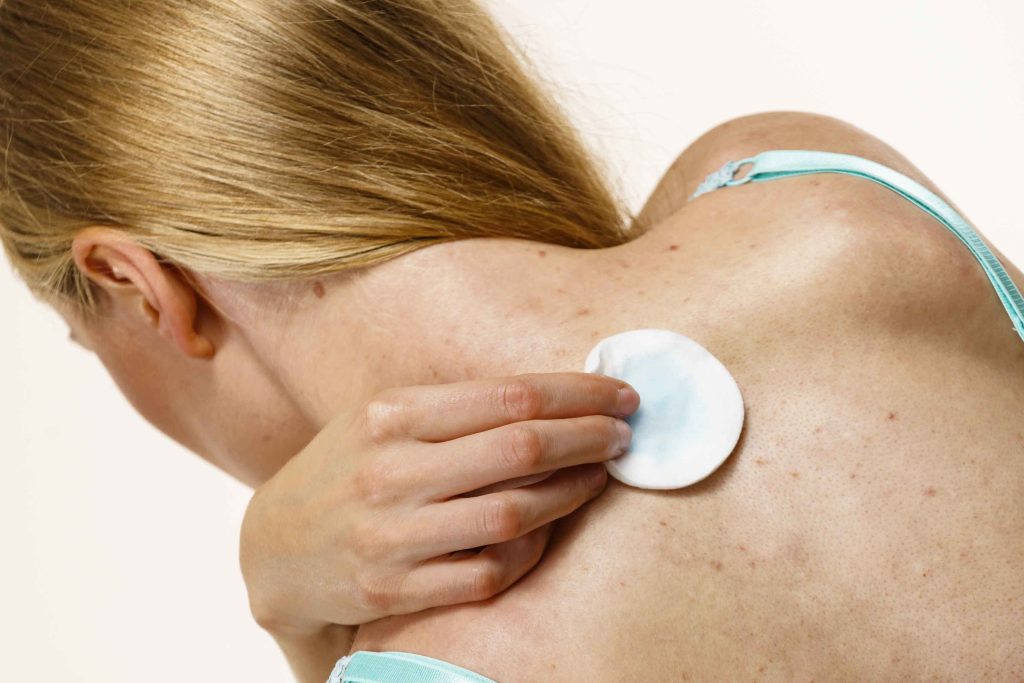
Think anti-acne products designed for the face may work for the back as well? You’re right, and dermatologists approve of this, too. Over-the-counter or prescribed topical treatments for pimples work great as bacne treatments, and you’re likely to see improvements similar to those on your face. For example, if you apply an anti-acne tonic with mild acids to your face twice a day and love the effect, you might as well slather it on your back.
Now you’re right to question, “How on Earth am I going to apply any treatment—these stubborn zits are so hard to reach even with a mirror?” The easiest solutions are asking someone to apply the product or getting yourself a back lotion applicator. You might also consider buying a body spray powered by anti-inflammatory components like salicylic acid or benzoyl peroxide (using the latter ingredient might need a consultation with a derm first). They’re super convenient and easy to use even on the go, ensuring you don’t miss a spot.
Body Wash Tips to Clear Up Back Acne
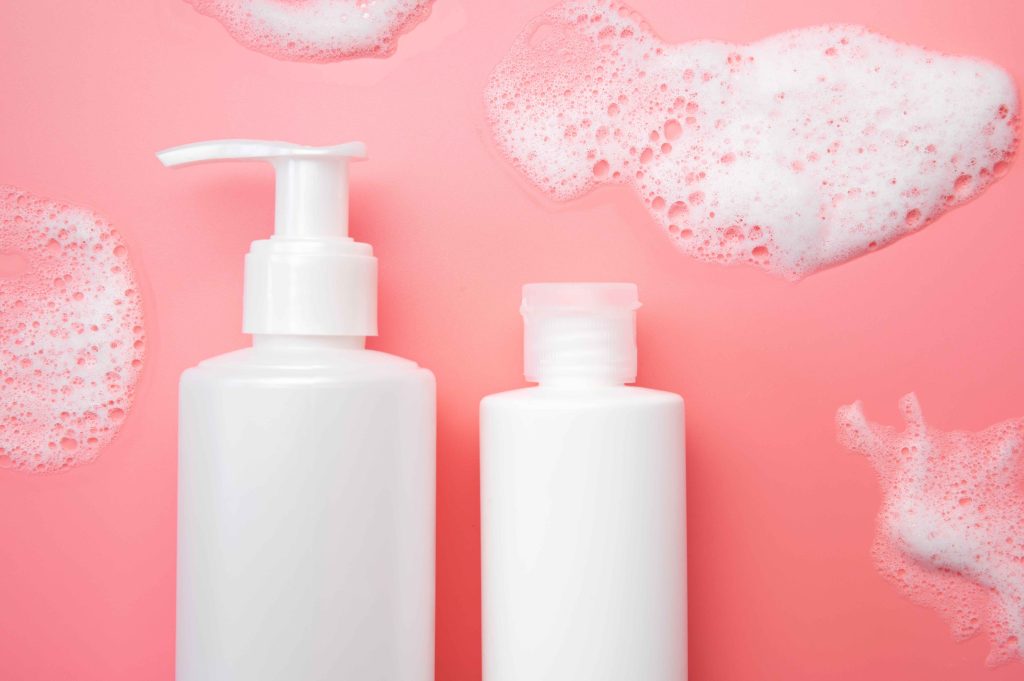
Having bacne doesn’t necessarily mean there’s something wrong with your hygiene routine; it’s more about needing some tweaks to ensure you don’t unintentionally cause inflammation.
The first rule of the Clean Back Club is to shower as soon as you can after sweating. Dirt and debris will happily linger on your skin and may promote inflammation, so the quicker you get those guys off your back, the better. (Though we get it, refreshing while at the office or between back-to-back calls can be mission impossible.)
Now, ask yourself: “What’s my go-to showering product? Do I lean toward the perfumed ones too often?” We bet you love your scented shower gels as much as we do (peach scent fans, anyone?), but your skin… doesn’t care at best and can get irritated at worst—even natural scents like “fresh cotton” can be problematic. So, using a non-fragrance option significantly lowers the chance of irritation. The things we do for clear skin!
So, what ingredients should you seek in body wash products? Focus on zinc, niacinamide, or other anti-acne ingredients like salicylic acid and azelaic acid, which will soothe inflammation, clear clogged pores, and prevent new zits.
Finally, swap your face and body towels for fresh ones every three days to avoid transferring bacteria.
Beware of Haircare Residue
Did you know most shampoos and conditioners are pore-clogging for your body’s skin? Although that’s probably the last thing you think about when you wash your hair, consider not letting shampoo or conditioner residue drip down your shoulders and back. Also, we recommend washing and conditioning your hair before your body—the after-hair-washing shower will help you remove the traces from haircare products.
Should You Sleep On It?
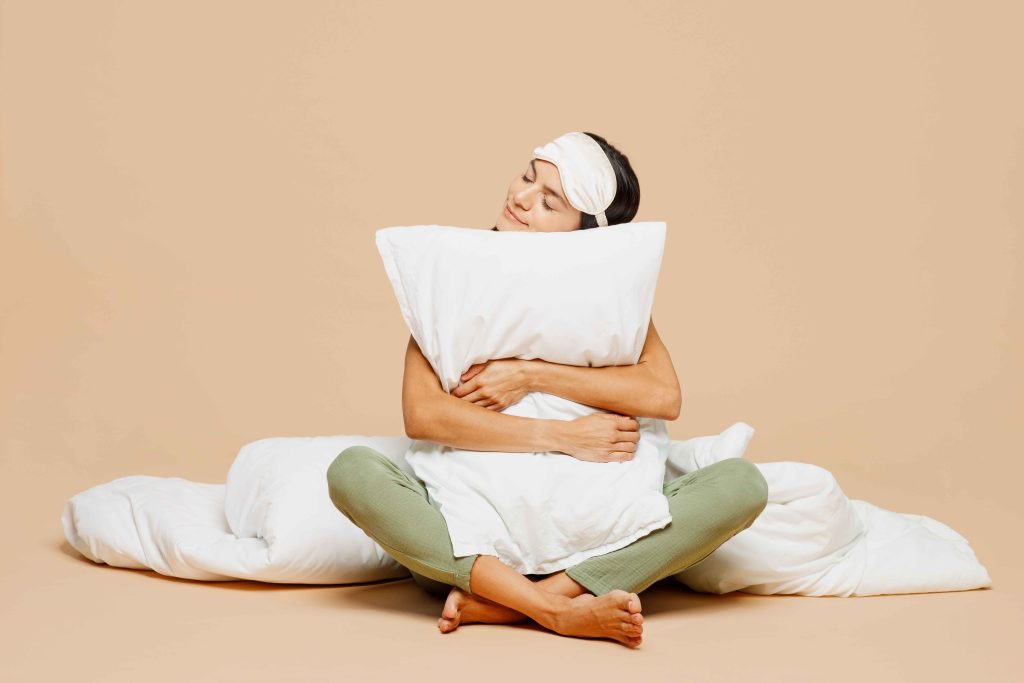
Considering we humans sleep for basically one-third of our lives, what our skin touches during this time is crucial. But this post is not to make you buy some innovative fabric for your bedsheets—just keep these basic points in mind:
- Clean bedsheets. Change them at least once a week—this way, you won’t “boil” in germs and sweat accumulated during the previous week, rubbing against your skin. We get it, life often breaks the routine you established, and getting your contact lenses off is all you have the energy for. If you feel wiped out but still want clean vibes, wear freshly washed pajamas. You can even use a clean t-shirt as a pillowcase!
- Mild detergents and softeners in moderate amounts. While scented detergents and softeners might make your clothes and bedding smell great, they can also mess with your skin. To minimize the risk of skin reactions, opt for dye-free and fragrance-free formulas for your bedding. Overusing these products can even create a potentially irritating film on your linens.
Ugh, too much info at once? Here’s a joke to help you loosen up a bit:
When is a scrub not a scrub? When it’s a-peeling!
Sorry, we know it’s cheesy. Ready to explore more anti-bacne tips?
Clothes and Co
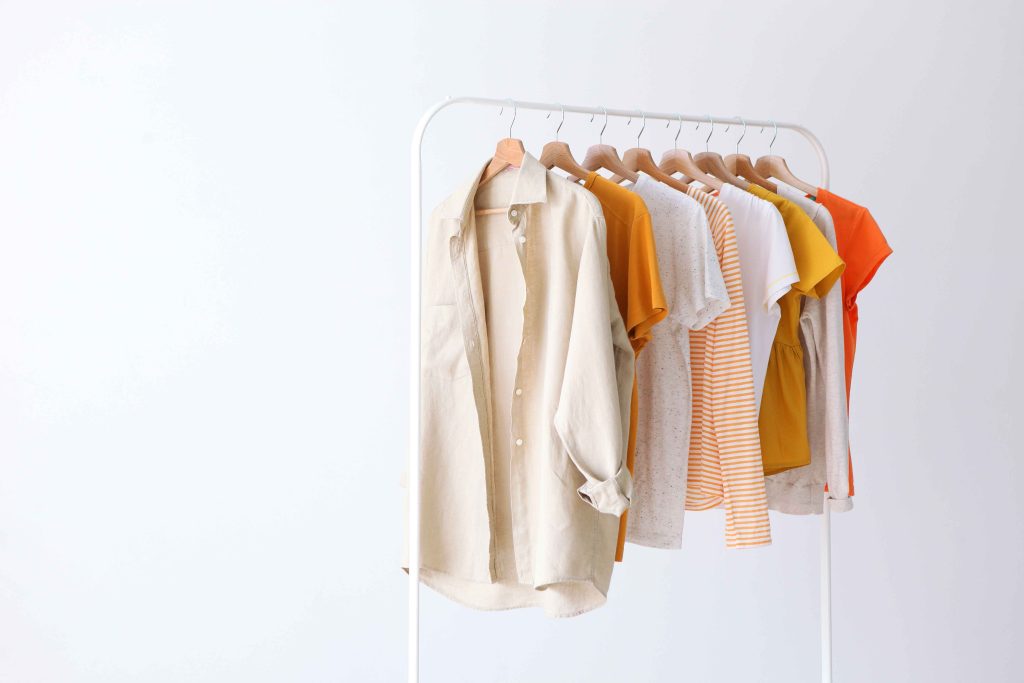
While we’re not urging you to overhaul your entire wardrobe, make sure that most of your daily outfits are made from natural, breathable fabrics (think cotton, linen, hemp, or silk).
The fit of your clothes also matters—the tighter an item is, the more it rubs bacteria against your skin. This is especially true for sports bras, which are designed to be supportive. Just imagine how much sweat they can accumulate after an especially long run on a scorching day! That’s why washing your sports bra after every workout is a must.
Similarly, backpacks can also trigger back acne. Yes, they’re oh-so-comfy, but did you know many hikers deal with back acne because of the punchy cocktail of sweat and friction? The backpack and its straps rub against your skin and may cause your back to flare up. If you notice your back acting up after wearing a backpack, try swapping it for a handheld bag.
Is the Sun a Threat?

Thinking of spending another hour sunbathing, hoping the sun’s rays will clear your acne? Sadly, the opposite is true—the sun’s rays often darken acne, leading to longer-lasting dark spots compared to if you had avoided prolonged sun exposure. To help manage acne, always wear oil-free sunscreen when outdoors. Make sure to apply it to all exposed skin, including areas not covered by clothing.
Massage and Back Acne
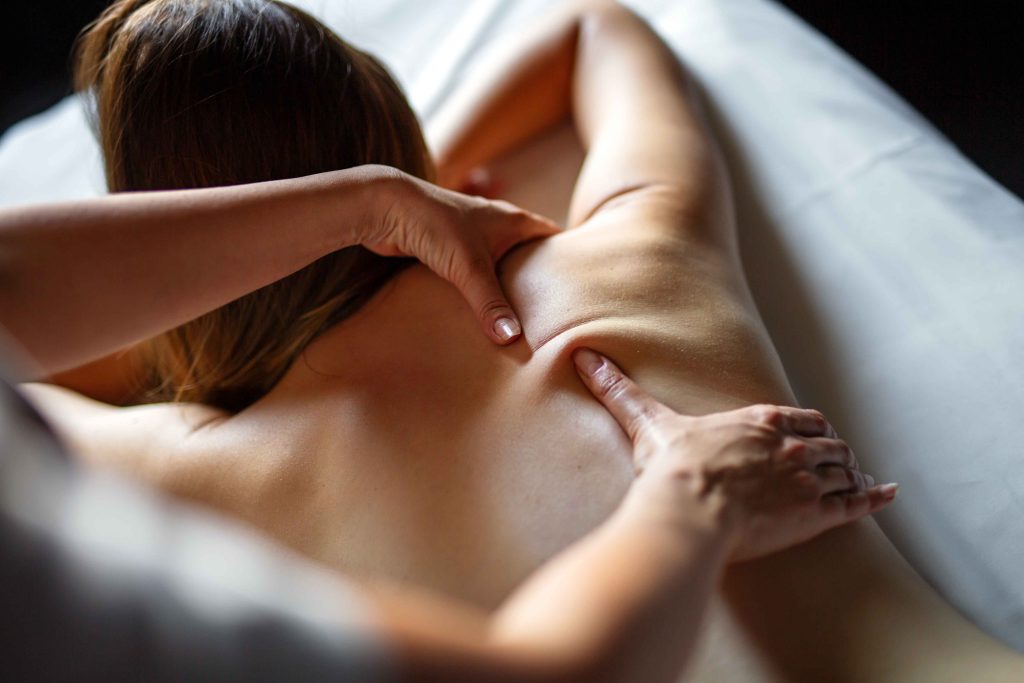
If you’re dealing with a bad bacne breakout, it’s safest to put your massage sessions on hold. But if you can’t live without those relaxing treatments, make sure the specialist uses non-comedogenic massage oils and cleanses your skin thoroughly afterward.
You’ve Got This, Really
If this post has boosted your confidence about managing bacne, that’s fantastic! However, don’t expect overnight miracles. It’s not just us being cautious—studies show that you’re likely to see benefits after 1–3 months of sticking to a consistent routine. To see whether a product or routine is working, patience is key (and no, Duolingo didn’t give us this advice 😁).
FAQ
-
Where do I start with OnSkin?
Download the app and think of a product you’d like to know more about. Then, go to the main screen and choose how you’d like to get the info —by manually looking it up in the search bar, by scanning its barcode, or by simply taking a picture of the packaging. Once you’ve done any of these, you can see how safe the product is and if it suits your skin or hair (if this analysis is available).
-
What is Safety Rating, and how is it calculated?
In OnSkin, we base product rates on ingredients. Each is closely studied by our medical team and then evaluated. This way, each product gets a score from 0 to 100, with 100 as the safest level.
Safety Levels
- Excellent (76–100)
- Good (51–75)
- Not great (26–50)
- Bad (0–25)
These scores are backed by the latest scientific studies. You can find links to the resources we’ve used on each ingredient page. To assess the safety of product ingredients, we evaluate them according to the following parameters/criteria
- Endocrine disruption risk / Reproductive toxicity
Indicates the probability of mimicking, blocking, or interfering with the body hormones.
- Сarcinogenicity
Measures the potential risk of inducing cancer.
- Allergy risk
Estimates the probability of an allergic reaction.
- High concentration alert
Determines the risk of being unsafe in certain amounts.
-
What is Skin Match?
Based on the info you input about your skin type, age, skin care goal, and other “settings,” OnSkin checks how well a product is tailored to your unique skin needs — it’s basically like a dermatologist helping you find the right products, minus the fees and the long wait. The product you’re checking might be labeled as It’s a match!, Hit-or-miss, or Not a match for you. The app also detects ingredient groups such as Anti-acne, Anti-inflammatory, Moisturizes, May be drying, Comedogenic, and others — by tapping one, you see exactly what ingredients from this or that group are in the product.
-
I seem to have a problem with using the app. Who should I contact?
Please reach out to us at [email protected], and we’ll carefully look into your issue. Your ideas for improving the app are also very welcome!
-
Do you have an Android version?
Not yet! Hey Android users, we hear you, and we're thinking about making an Android version, but we haven't started the development yet.
Tracker Sent!
It’s on the way to your inbox.


